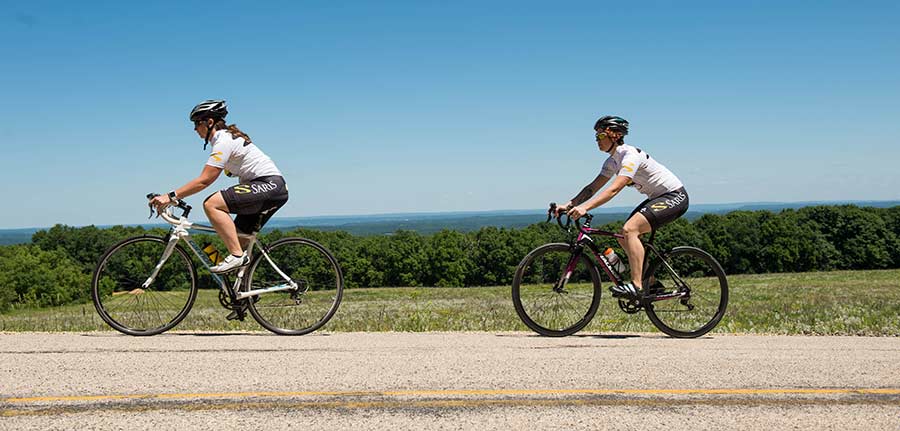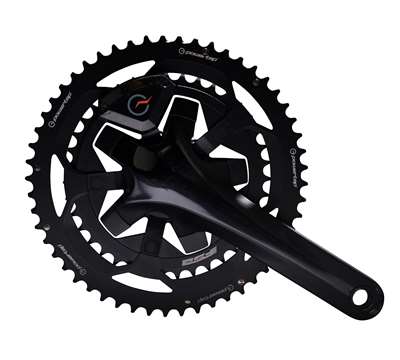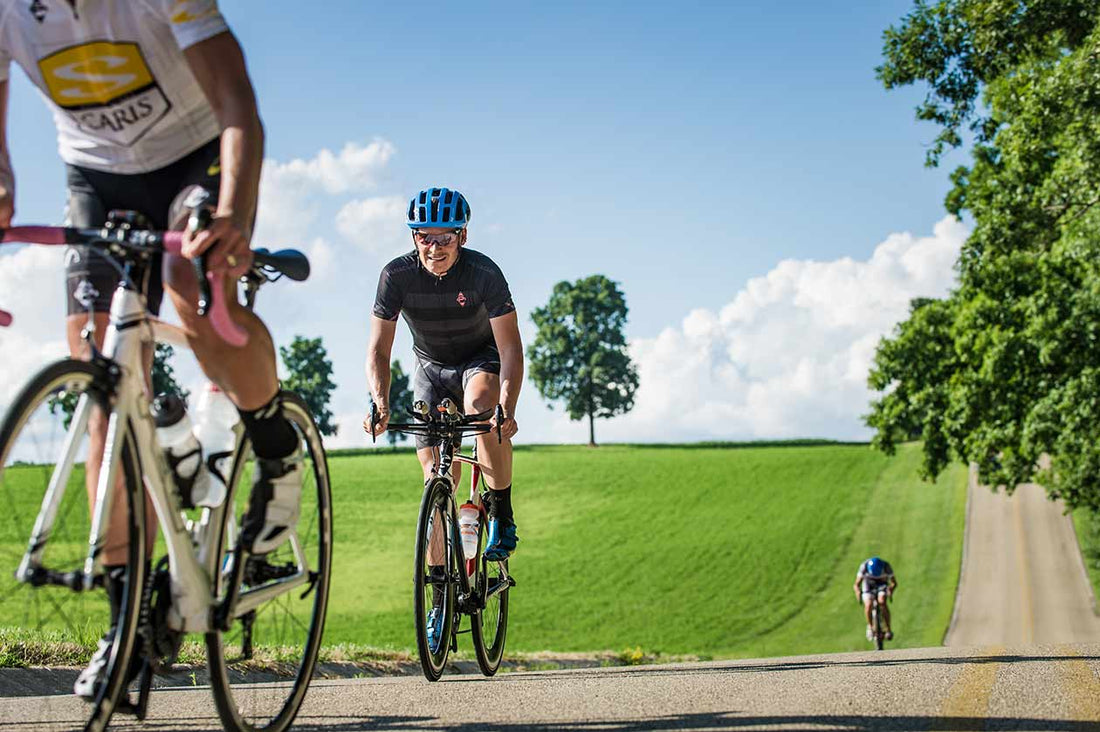Fact: we're more than just a manufacturer of good-looking bike racks. Within our walls we also build PowerTap power meters. Since the early 2000s, PowerTap has been part of the Saris tribe, helping push athletes towards peak performance.
If this is the first time you’ve heard of a power meter, you’re not alone. Essentially, these electronic cycling accessories measure the “work” (or power) of a rider, and by using a power meter a cyclist can get instant feedback and measurements directly to their handlebar mounted cycling computer or phone app.
The special sauce of riding with power comes from the fact that unlike speed or cadence, power is not affected by hills, wind, terrain or other environmental factors.

It’s only within the last 15 or so years that power meters have become more accessible to non-professional athletes. The legendary PowerTap hub-based system was one of the few to open the doors of power training to everyday riders. Only recently have terms like “power” and “watts” worked their way into the cyclist’s vocabulary.
The popularity of virtual training apps, like Zwift and Rouvy, have a lot to do with this. Power output is part of the experience, enough so that even without a power meter or smart trainer, their algorithms are able to calculate power based on the bike trainer being used or the speed of the rider.
This interest in power training has been on the incline since PowerTap first came on the scene in 1998, with more manufacturers and types of power meters available now than ever. Yet, one constant remains – the fact that power is the most accurate and reliable way to measure cycling intensity.
And as one of the only power meters to be validated by third party research, PowerTap knows a thing or two about training with power.

Why Train with a Power Meter?
Most training systems only allow you to measure your body’s response to an effort. The actual amount of work you perform remains a mystery – or at best, an estimate. When power becomes the training measurement, the training itself can become more effective.
- Heart rate and your own perceived exertion is the best way to measure your body’s response.
- Power is the best way to measure intensity and work.
Related: Power Meter Basics

Measuring Power on a Bike
On a bicycle, there are three places to measure power: the hub, pedals or crank. Power is then reported as the product of torque and speed at that specific point on the bike.
Pedals
The PowerTap P1 Pedals are a dual-sided power meter that uses the amount of force applied to each pedal to measure power. The direction and magnitude of the applied force is then analyzed in real-time to determine which portion of that force is directed to drive the bike forward.

Similarly, the PowerTap P1S Single-Sided pedal power meter utilizes the same principles with the left pedal only. These single-sided power meters double the power measured at the left pedal to estimate the power being applied to the right pedal. And aside from the PowerCal, they’re also the best way to get started training with power.
Hubs
PowerTap hub-based power meters work by measuring the amount of force, or torque, at the rear hub using strain gauges embedded within the hub. The PowerTap hub also measures the speed of the hub by using a speed sensor within the hub and a magnet attached to the axle.

The PowerTap hub is an all-in-one solution for power, speed and cadence and is the platform on which PowerTap built its reputation for accuracy and durability.
Chainrings
The PowerTap C1 Chainring power meter measures the amount of torque applied to the chainrings using strain gauges embedded into each arm of the spider attachment.
Angular velocity measured with an accelerometer on the chainring is combined with torque to product a true measure of power.

Plus, all PowerTap power meters are designed, engineered, built, tested and shipped from our headquarters in Madison, Wisconsin, and are backed with some of the best customer service around.
Clip in, and let’s ride.

Interested in learning more about training with a power meter? Check out the Ultimate Cycling Performance Guide.
